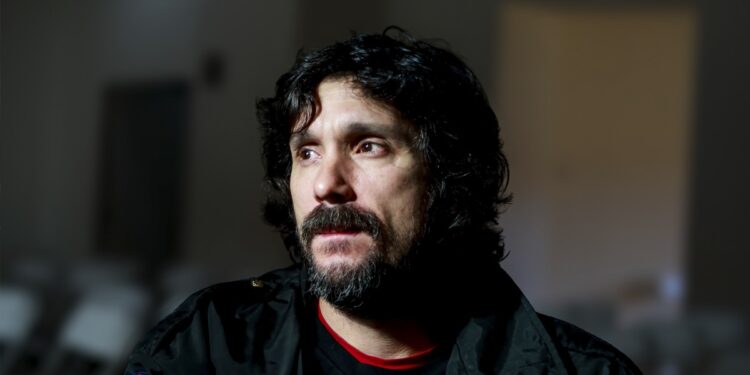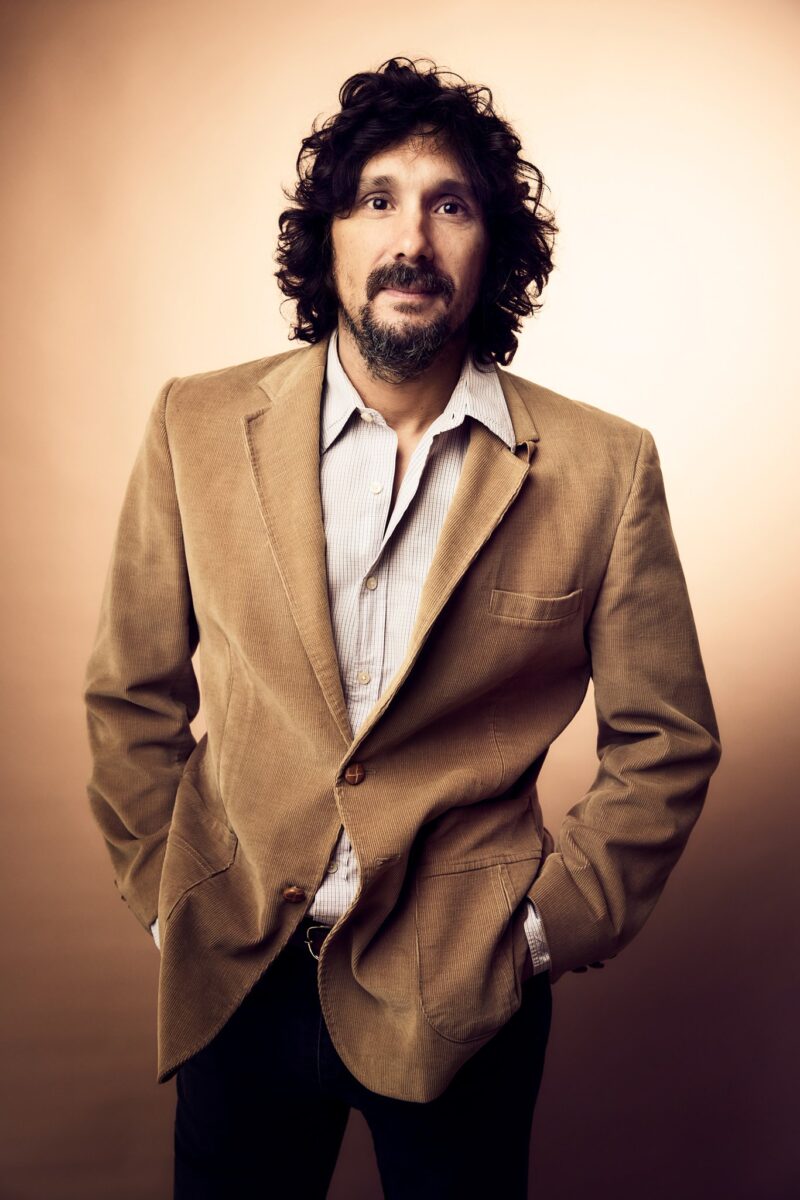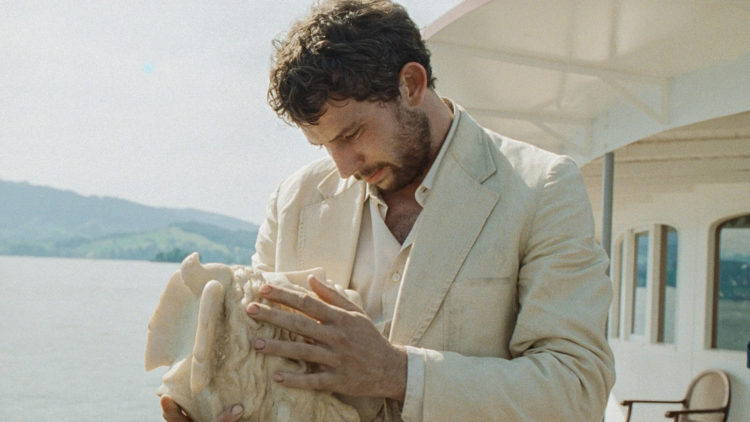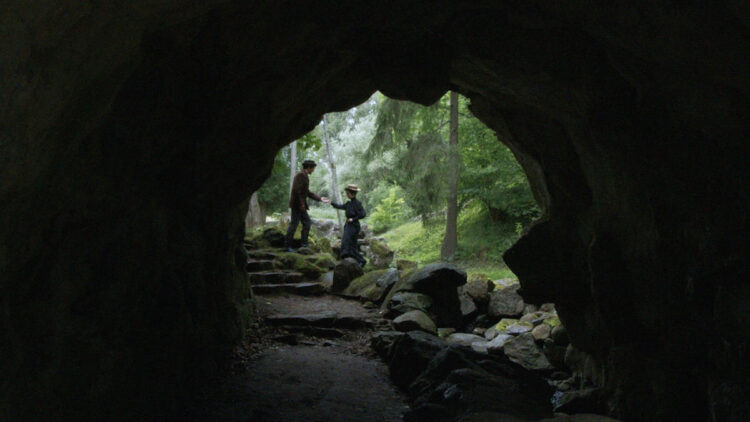

One of the pioneers of contemporary slow cinema, Lisandro Alonso made a name for himself on the festival circuit with his 2001 feature La libertad, which took that very notion of duration and “boredom” associated with the art-film subgenre to new heights. Following his international breakthrough-of-sorts in 2014, the Viggo Mortensen-starring post-colonial western Jauja, Alonso returns (finally) with Eureka.
The highly ambitious triptych regarding indigenous experience and representation spans the globe while weaving in and out of reality, a cinematic dimension and somewhere in between. The film manages to be as mysterious and boundary-pushing as Alonso’s past works, even with slightly more resources at hand. Ahead of the film’s Friday theatrical opening, I was lucky enough to catch up with the visionary director over Zoom.
The Film Stage: The film was shot in multiple locations: Portugal, Spain, Mexico, and the United States. Before making the film, had you been to all these places before and were they calling out to you as spots to base a film around? Or was it more a case where they were more convenient areas that suited the thematics you were pursuing?
Lisandro Alonso: It depends, because this kind of film depends a lot on the support of institutions who give us some opportunity to get financing. The last part of the film, which I shot in Mexico, was supposed to shoot in the Amazon in Brazil, but then President Bolsonaro arrived and he cut all the subventions for the film industry and I had to move on and try to get some more financing in Mexico and that’s why we shot there. But then I did receive a lot of support from Europe, so I had to spend some money there, and we chose to shoot in Portugal and in Almeria [Spain], where a lot of spaghetti westerns were made. But the only main location that was not a choice for me to move from the map was Pine Ridge in South Dakota, because I had been traveling there for more than four years in different seasons of the year. I live in Argentina, but I was spending a year in the U.S. doing a couple of fellowships, and I traveled there a lot in order to approach that community and to understand how it is living there.
When you did arrive at many of these locations, did they in any way change the content of the film? Like, you saw new mysteries or angles for the film arrive in some of them?
Yes, absolutely. Because the way I work is: I first approach my main idea that I wrote, and then I start to observe a lot; I change details, characters, situations, locations, rhythms, seasons. It depends. I get a lot of influence especially from non-professional actors that I work with.
There’s a really incredible scene in the film, or I should say more of a transition, where it moves from the first chapter to the second, all communicated through the reveal of an image on a television. Was that one of the first things that came to mind when conceiving the film, or was it something that came deeper into the process?
No, that one especially I thought a lot about. How can I move from this Metro-Goldwyn-Mayer studio film to a real present-time situation and drama? And I thought, “Okay, this is just entertainment.” I mean, not entertainment, but you know what I’m trying to say, and then we will move suddenly to a color, present, nowadays-time situation. So I thought it was a good shot. And also the western: it was an introduction in order to put the audience in that kind of western film environment where outlaws just walk around, just shooting guns in the frontier, you know.
You mentioned your Harvard fellowship. While you were there at Harvard and in Boston, did you really start thinking more intensely about America, both in terms of its history and also the images it’s created?
Yeah, absolutely. I mean, I live far away from that. I live in Argentina and I cannot move from here, unfortunately. But when I was there I started thinking about what I would like to do. I mean, I never in my life dreamed of making an English-language film, especially in the U.S. because of the kind of approach I have in cinema. But once I was there I immediately asked Viggo Mortensen if he knew any reservation in the U.S. where I could go and have a look. He immediately just sent me to Pine Ridge where he had been before, doing some research, and I started knocking on doors and asking some questions. But more than that, just staying there for a couple of weeks, just driving around and seeing how the situation is. So yes: it was for sure whatever happened with the film; it was planned not to move an inch from that community.
I know that you had to switch cinematographers during production because your regular DP, Timo Salminen, fell ill. With the new DP you hired, Mauro Herce, did you encourage him to push you into new directions, or was it more of an effort to replicate your past DP’s work?
No, I think the way I approach DPs is more like a human kind of direction. So I didn’t ask Mauro to try to reproduce Timo’s work because Timo is so unique. And I just find influence by Mauro’s work in his previous films that I really love. Since we both speak Spanish, it can be fluid somehow. Even if we don’t know each other from before, it was kind of a different obsession at the same frame, for the same images. I think we handled it a lot, especially because we did have to fight together against the temperature, the weather, the incidents, the things that we have to change, because a lot of things happened. While we were shooting [in Pine Ridge], it was supposed to be 16 days and we ended up spending two months in the extremely hard winter, which I’m not used to. And every day, every moment, every hour, things change because we were not at all their priority in the community. So they have a thousand other priorities than these guys making a film. So we had to adapt to whatever happened every day.
There was a nine-year gap between this film and Jauja. Were there other projects you’d been trying to make in the interim? Or was this gap of time purely about developing the idea for Eureka?
Well, we were interrupted three different times by the pandemic. And so it was kind of a pain in the ass. And we have to shoot in four different countries, which means four different crews and periods and protocols and travels and logistics. So it was super-, super-demanding. But no: I didn’t have any other project in mind. I just go one-by-one until I finish, and I’m very stubborn. But I know it takes a lot. I mean, I got divorced in the middle. Things happen in a personal way––not only with me, but with people who were involved in the film––and during all these years they have to cancel and I have to call others. Especially with professional actors, things happen, so we have to reshoot a lot of things. But I think from now on, in the future years, I learned a lot from this film. But I don’t want to wait 10 years to have another film. That’s a lot.

You had previously made a thematic trilogy with La libertad, Los muertos, and Fantasma. Do you think Jauja and Eureka are in some ways the first two parts of a new trilogy?
That’s a really good question. I’m not sure because I never know what is coming next with my projects, but I think that I might go back to the way I made those three early films you mentioned. Because I travel a lot, it depends on who I work with. In the last two I worked with the poet Fabian Casas and I worked with professional actors; I worked in other languages, in other countries. But I think I need to be back in my own land. A lot of things are happening in Argentina, you might know, but it’s incredible. There’s a lot of things that are going on, and I really need to be here to put my body here, my camera, microphones, and people around me to observe and to share what is happening nowadays around me.
You mentioned your home country of Argentina. I read that the current President, Javier Milei, has been basically trying to roll back indigenous rights in the country by taking land away from communities and whatnot. Did you feel, before the President was in office, that progress was being made for indigenous rights, or has this always been a very strenuous topic in the country?
Well, if I have to be honest, I don’t consider myself this kind of political indigenous, rights-to-the-Natives kind of person or something. I just consider them to be like any other minority around us. I really wanted to see the difference between what it means to be native in the U.S. and in South America. That was my approach to this film and to feel how if, even we have a very shaken democracy here, how we try to include them or how I feel maybe––and I’m talking about my own point of view here––the U.S. excludes them in a different way. That’s how I see it as a foreigner, you know––I have my point of view and I don’t know if that’s the real reality.
You’ve taken the film to a number of festivals like Cannes and New York and others. How has the reaction varied in these different countries towards the content of the film?
Well, there’s some controversy around the film because it depends on [context]. I’ve been traveling a lot with the film, and it’s a complex film to watch. I really want people to approach the film in the way I approach poetry or painting, so not really, like, in a narrative way. But I think it depends on the country and their own insight on the issues that are part of the theme. For example, in Canada, they didn’t want to show the film at the Toronto Film Festival because they thought it was not the right moment to show this kind of film there.
Yeah, I’m from Toronto, so I was very mad it didn’t play TIFF last year. I’m glad to know what happened.
I mean, even if they like the film. The programmers, they’re old friends. I’ve been traveling there for more than 20 years so I know people and young people know my works, but I think they thought, “Maybe not this film. I don’t want to get in trouble with anyone.” But it’s always something that might happen with your film.
Eureka will open in limited release on Friday, September 20th.
The post Lisandro Alonso on Eureka, Indigenous Perspective, Film Festival Controversies, and Being Stubborn first appeared on The Film Stage.



